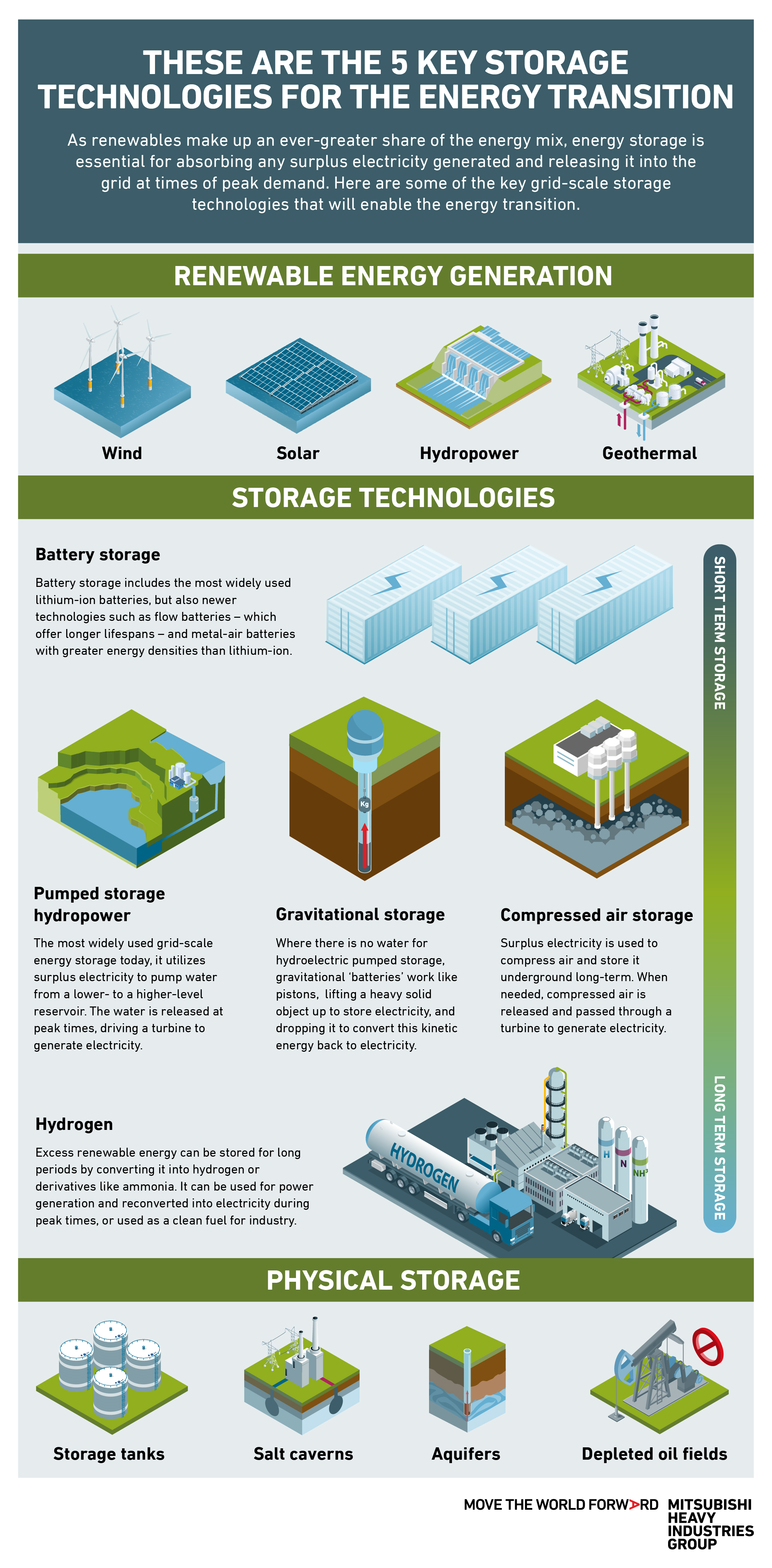5 key storage technologies needed for the energy transition

Along with renewable energy and low-carbon fuels, energy storage is viewed as vital for reaching net zero by 2050. Yet, grid-scale storage needs to grow significantly to ensure excess electricity generated at any time can be stored and fed back into the grid when demand exceeds supply.
Today, pumped hydro-storage is the most widely used energy storage technology. However, battery-electric storage systems are playing a growing part in grid-scale storage. With batteries now available for a tenth of their original cost compared to 15 years ago, they are becoming increasingly affordable for the power sector. In 2023, it accounted for more than 90% of overall battery demand, and use of batteries in the industry jumped up more than 130% year-on-year.
Batteries have the advantage that they can be used in a wide range of locations and scenarios, but energy storage is not a one-horse race. While batteries are only really suitable for short-term storage, hydrogen can be used to store energy for months or even years. It will take a mix of technologies, suited to a wide variety of geographies and applications, to provide dependable grid-scale storage for our net zero future.

![]()
Discover more about MHI’s work to help realize the energy transition.





